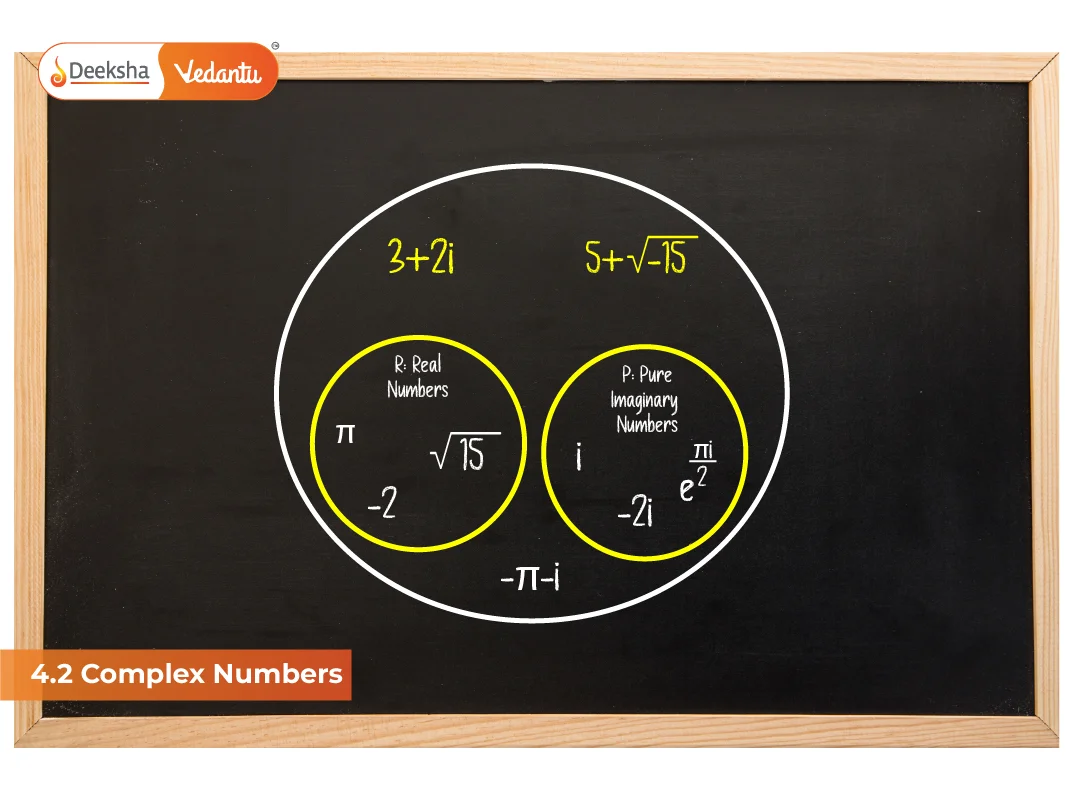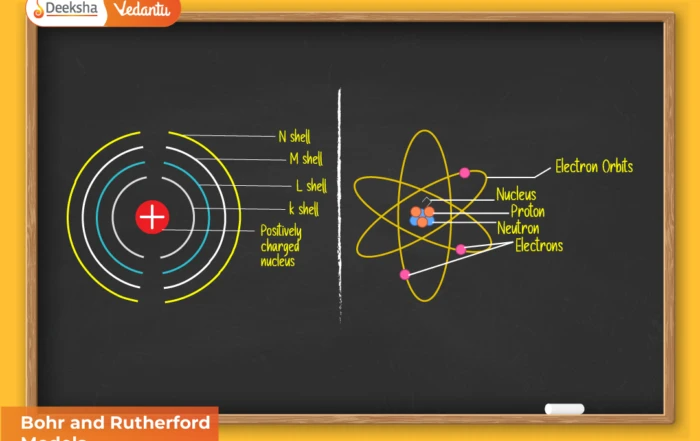
Introduction
In mathematics, our journey with numbers began with natural numbers, which were later extended to whole numbers, integers, rational numbers, and real numbers. Each extension solved certain limitations of the existing system. However, when solving equations such as:
x² + 1 = 0
We quickly realize that no real number satisfies this equation, because the square of any real number is never negative. This limitation forced mathematicians to define a new number system: complex numbers.
Complex numbers provide solutions to equations that cannot be solved within the real number system. They are extremely important in higher mathematics and in applications across physics, engineering, and computer science. For students preparing for JEE, KCET, or COMEDK, mastering complex numbers is crucial, as this concept appears repeatedly in algebra, coordinate geometry, calculus, and even physics-related questions.
In the JEE Main exam, the chapter “Complex Numbers and Quadratic Equations” typically comprises:
- About 2 questions, contributing approximately 8 marks — roughly 6–7% of the overall Mathematics section.
In KCET, this chapter accounts for:
- Around 5% of the Math section or approximately 1 question.
This means dedicating focused effort here yields high reward—it’s a high-yield topic with clear payoff in exams.
The Imaginary Unit i
To overcome the restriction of real numbers, we introduce the imaginary unit, denoted by i, with the defining property:
i² = –1
This means:
√(–1) = i
Using this new definition, we can now write:
√(–9) = 3i, √(–16) = 4i, etc.
Every square root of a negative number can be expressed as a multiple of i. This was the foundation of complex numbers.
Definition of a Complex Number
A complex number is defined as a number of the form:
z = a + ib
where
- a and b are real numbers
- i is the imaginary unit with i² = –1
Here:
- a is called the real part of z (denoted Re(z))
- b is called the imaginary part of z (denoted Im(z))
Examples:
- 2 + 3i → Re(z) = 2, Im(z) = 3
- –5i → Re(z) = 0, Im(z) = –5
- 7 → Re(z) = 7, Im(z) = 0
Thus, real numbers are a subset of complex numbers (when the imaginary part is 0).
Need for Complex Numbers
Let’s revisit a quadratic equation:
x² + 4x + 13 = 0
Discriminant, D = b² – 4ac = (4)² – 4(1)(13) = 16 – 52 = –36
Since D < 0, the roots are non-real. But with complex numbers:
x = [–b ± √(D)] / (2a)
= [–4 ± √(–36)] / 2
= [–4 ± 6i] / 2
= –2 ± 3i
Hence, solutions that were previously impossible now exist within the set of complex numbers. This is why the concept is central in algebra.
Types of Complex Numbers
- Purely real numbers → when b = 0. Example: 5, –12, 0.
- Purely imaginary numbers → when a = 0 and b ≠ 0. Example: 2i, –7i.
- Zero complex number → when a = 0, b = 0. That is, z = 0.
Equality of Complex Numbers
Two complex numbers z₁ = a + ib and z₂ = c + id are equal if and only if:
a = c and b = d
Example:
If z₁ = 3 + 2i and z₂ = 3 + yi, then equality requires y = 2.
This property ensures that real and imaginary parts can be compared separately.
Representation on the Argand Plane (Preview)
While this will be expanded in 4.5, let’s briefly mention:
Every complex number z = a + ib can be represented as a point (a, b) in the plane. The horizontal axis is the real axis, and the vertical axis is the imaginary axis. This graphical interpretation makes complex numbers much more intuitive.
Basic Operations on Complex Numbers
(Though detailed study is in 4.3 Algebra of Complex Numbers, we’ll preview here.)
For z₁ = a + ib, z₂ = c + id:
- Addition: z₁ + z₂ = (a + c) + i(b + d)
- Subtraction: z₁ – z₂ = (a – c) + i(b – d)
- Multiplication: z₁ × z₂ = (ac – bd) + i(ad + bc)
- Division: Requires multiplying numerator and denominator by the conjugate of the denominator.
Applications of Complex Numbers
- Quadratic equations with negative discriminants → Solutions become possible.
- Trigonometry & Geometry → Rotation of points, transformations.
- Electrical Engineering → Representing alternating currents as complex numbers.
- Quantum Mechanics → Wave functions involve complex numbers.
- Signal Processing → Use of Fourier transforms.
Thus, complex numbers are not “imaginary” in practice—they are indispensable in real-world science.
Worked Examples
Example 1:
Write √(–81) in terms of i.
Solution: √(–81) = 9i
Example 2:
If z = 2 + 5i, find Re(z) and Im(z).
Solution: Re(z) = 2, Im(z) = 5
Example 3:
Solve for x if x + 2i = 3 + yi.
Comparing real parts: x = 3
Comparing imaginary parts: 2 = y → y = 2
So the solution is x = 3, y = 2.
Example 4 (Quadratic with complex roots):
Solve x² + 2x + 5 = 0
D = b² – 4ac = 4 – 20 = –16
x = [–2 ± √(–16)] / 2 = [–2 ± 4i] / 2 = –1 ± 2i
Common Mistakes
- Writing √(–9) as ±3i directly, without noting i² = –1.
- Forgetting that real numbers are also complex numbers.
- Confusing imaginary part with coefficient: In 7 – 4i, Im(z) = –4, not 4.
- Treating it like an algebraic variable (it obeys i² = –1, not normal squaring rules).
Strategy for Exams
- Always separate real and imaginary parts.
- For quadratic roots, check discriminant first.
- Use quick tricks: √(–a) = i√a.
- In MCQs, eliminate options by checking real vs imaginary consistency.
- For JEE, learn to move between algebraic form (a + ib) and trigonometric/polar form.
Quick Reference Table
| Feature | Formula/Note |
| Imaginary unit | i² = –1 |
| Complex number | z = a + ib |
| Real part | Re(z) = a |
| Imaginary part | Im(z) = b |
| Equality criterion | a + ib = c + id → a = c, b = d |
| Quadratic roots | Use –b ± √(D) / (2a), include i |
FAQs
Q1. What is the definition of a complex number?
A number of the form a + ib, where a and b are real numbers and i² = –1.
Q2. Why do we need complex numbers?
To solve equations like x² + 1 = 0 which have no real solutions.
Q3. Are real numbers complex numbers?
Yes, every real number can be written as a + i0.
Q4. What is the imaginary part of –7i?
It is –7.
Q5. Where are complex numbers used in physics?
In AC circuits, quantum mechanics, and signal processing.
Summary and Key Takeaways
- Complex numbers extend real numbers by including solutions of √(–1).
- General form: z = a + ib.
- Real part = a, imaginary part = b.
- Essential in solving quadratic equations with negative discriminants.
- Applications span mathematics, engineering, and science.
- This section (4.2) lays the foundation for operations, modulus, conjugate, and polar representation in later subsections.











Get Social